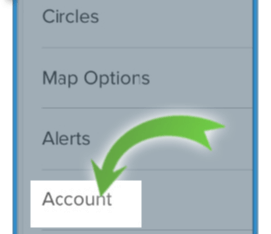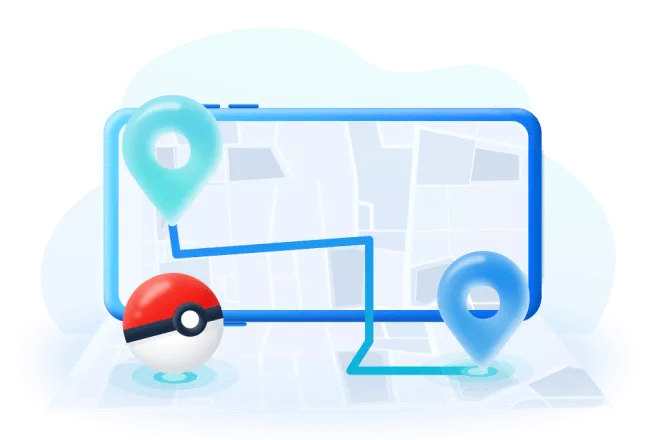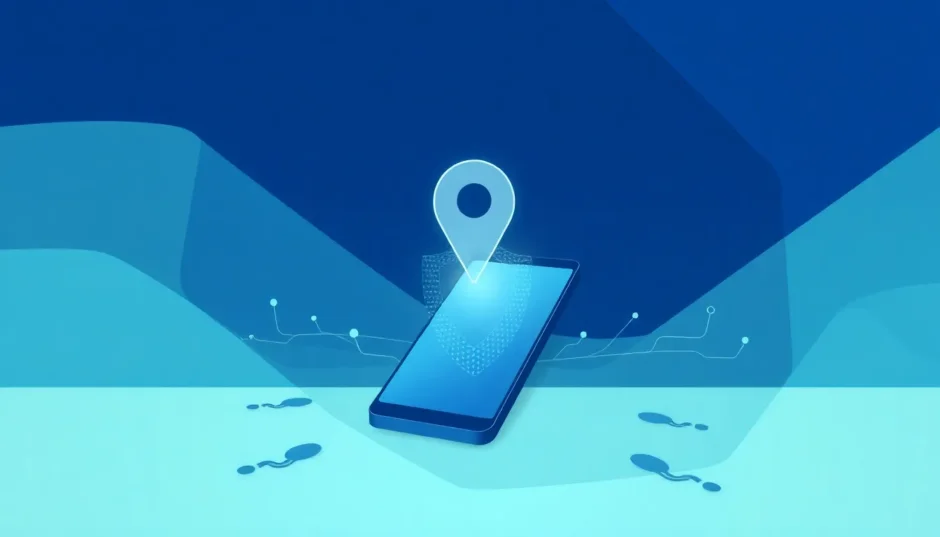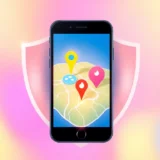Living in a world where our phones know exactly where we are has made location-sharing apps like Life360 incredibly popular, especially among families and close friends. But what happens when you want out? If you’ve ever found yourself wondering, “if I delete Life360 app can I still be tracked,” you’re not alone. It’s a common concern for anyone valuing their privacy.
This question pops up for various reasons—maybe you’re tired of constant monitoring, need a break from family oversight, or simply want more control over your location data. Whatever your situation, understanding how Life360 works and what happens after deletion is crucial.
Let’s break down exactly what occurs when you remove Life360 from your device and explore whether someone could still track your movements afterward.
Table of Contents
- What Exactly Happens When You Delete Life360?
- Step-by-Step Guide to Deleting Your Life360 Account
- The Big Question: If I Delete Life360 Will It Still Track Me?
- Effective Methods to Stop Life360 Tracking in 2025
- Addressing Common Life360 Concerns
- Making Your Decision: To Delete or Not to Delete?
- Final Thoughts on Life360 and Your Privacy
What Exactly Happens When You Delete Life360?
When you decide to remove Life360 from your phone, several things occur immediately. The moment you delete the app, your profile vanishes from the circles you belonged to. Your family and friends who used Life360 to see your location will no longer have access to your whereabouts through the app.
Your personal information—including your name, profile picture, and location history—gets removed from the app’s active database. The last location you had when the app was active becomes your final shown position to other circle members. They won’t see any new movements or updates after deletion.
It’s important to distinguish between simply deleting the app versus permanently deleting your account. If you just remove the app from your phone without properly deleting your account, your profile might technically still exist in Life360’s system, though it won’t be updating or sharing any new location data.
Many people wonder “if I delete Life360 what happens to my data?” The company states that deleting your account removes your personal information from their active systems, though some data might remain in backups for a limited time according to their privacy policy.
Step-by-Step Guide to Deleting Your Life360 Account
If you’re determined to remove Life360 completely, here’s how to properly delete your account rather than just uninstalling the app:
Through the Mobile App:Open Life360 and tap the three horizontal lines in the upper left corner to access the menu. Select “Settings” then navigate to the “Account” section. Here you’ll find the “Delete Account” option. The app will show a warning message about what deletion entails—read this carefully since the action is permanent. Confirm your choice by tapping “Yes, continue.”

Through Website:You can also delete your account by logging into Life360’s website on a computer. The process is similar—find your account settings and select the deletion option.
Important Consideration:If you have a premium subscription, remember that deleting the app or account doesn’t automatically cancel your subscription. You’ll need to cancel this separately through the App Store, Google Play Store, or whichever platform you used for payment to avoid continued charges.
Some users prefer contacting Life360 support directly at support@life360.com to request account deletion, which is another valid approach.
The Big Question: If I Delete Life360 Will It Still Track Me?
This is where things get interesting. The straightforward answer is that Life360 itself won’t track you once you’ve properly deleted the app or account. The monitoring stops because the application is no longer active on your device to collect and share your location data.
However—and this is crucial—the question “if you delete Life360 app does it still track you” has a more complex answer when we consider other tracking methods. While Life360 specifically won’t follow your movements, your phone itself might still be sharing your location through other means.
Consider this scenario: Other members of your Life360 circle might still be able to see your last known location before deletion. More importantly, if your phone has other location-sharing features enabled or other tracking apps installed, those could still be active.
Your mobile carrier also has the capability to track your device’s location. This is separate from any apps and relates to how cellular networks operate—your phone constantly communicates with nearby towers, allowing approximate location tracking. Additionally, if you use location services like Google Location History or Find My Device (for Android) or Find My (for Apple devices), these might continue tracking unless disabled separately.
.png)
So when people ask “if you delete Life360 does it still track you,” the most accurate response is: Life360 itself stops tracking, but other tracking methods might still be active unless you specifically disable them.
Effective Methods to Stop Life360 Tracking in 2025
If you’re not ready to completely delete Life360 but want to stop sharing your location temporarily or permanently, several methods can help you regain privacy.
Temporarily Disabling Location Sharing in Life360
The simplest approach is to turn off location sharing within the app itself. Open Life360 and go to Settings. Look for the “Location Sharing” option and toggle it off. This will pause location updates to your circle members without deleting the app entirely.
Be aware that other circle members will receive a notification that you’ve paused location sharing. The app displays “Location Sharing Paused” on your profile within the circle map. This method works well for temporary privacy needs but might raise questions from family members who notice the change.
Using Location Spoofing Applications
For those who want to maintain the appearance of sharing location while actually controlling what others see, location spoofing offers an excellent solution. This approach lets you set a false location that Life360 will report to your circle members.
iMyFone AnyTo.Provide App version that doesn’t require a computer.Provide App version that doesn’t require a computer.1-click change GPS location on iPhone/Android without jailbreak/root.Simulate GPS movement safely. Customize routes and speeds.Precise GPS Joystick Control makes it more realistic.Work with location-based apps such as PoGo, MHN, Life360, etc. without downloading cracked version. Compatible with the latest Android 16 and iOS 26/18.AnyTo only modifies location with user authorization.

Check More Details | Download Now! | Check All Deals
This sophisticated tool represents the next generation of location spoofing technology. Unlike basic VPNs that only change your IP address, iMyFone AnyTo actually modifies your device’s GPS data at the system level, making it appear as though you’re somewhere you’re not.
The process is remarkably simple: download the app, select your desired location on the map, and activate the spoofing. Your device—and consequently Life360—will report this fake location instead of your actual whereabouts. The joystick control feature allows you to simulate realistic movement patterns, making the fake location appear completely authentic.

What makes this approach particularly appealing is that it works without raising suspicions in Life360. The app continues to function normally and report location data—just not your real location. Circle members have no way of knowing you’re using spoofing technology unless you tell them.
The Burner Phone Strategy
Another method that’s gained popularity involves using a secondary device—often called a “burner phone.” The concept is simple: install Life360 on an inexpensive secondary phone and leave it at a location where you want to appear present. Then carry your primary phone with you as you go about your actual activities.
This approach ensures Life360 always shows you at the location where you’ve left the burner phone. While it requires maintaining two devices and potentially an additional phone line, it provides a foolproof way to control your reported location without any technical tricks or app modifications.
The burner phone method works because Life360 tracks the device it’s installed on, not you personally. As long as the app remains active on the burner device at a fixed location, that’s where you’ll appear to be regardless of your actual movements.
Addressing Common Life360 Concerns
Will Others Know If I Delete the App?
Yes, other circle members will notice your disappearance from the circle. Your profile will vanish from their app interface, and they’ll no longer see your location updates. If you want to avoid questions or concerns, it might be worth explaining your decision to close family members beforehand.
Can Someone Tell If I’m Spoofing My Location?
Life360 itself doesn’t have built-in spoofing detection that alerts other users. However, observant circle members might notice inconsistencies if your spoofed location doesn’t match your routine patterns or if you appear to move unrealistically fast between locations. Using sophisticated spoofing tools that simulate natural movement patterns helps minimize this risk.
What About Phone-Based Location Services?
Remember that even with Life360 deleted, your phone’s built-in location services might still be active. Both iOS and Android have their own location tracking features that operate independently of third-party apps. On iOS, the “Find My” network can track your device, while Android has “Find My Device.” These need to be disabled separately if you want to prevent all forms of location tracking.
Making Your Decision: To Delete or Not to Delete?
When considering whether to delete Life360, it helps to think about your specific situation and privacy needs. If complete privacy is your goal, properly deleting the app and account is your best bet. Just remember to check for other tracking methods that might still be active on your device.
If you want to maintain the social benefits of Life360 while controlling your privacy, location spoofing offers a middle ground. It lets you participate in circles while deciding exactly what location information you share.
iMyFone AnyTo.Provide App version that doesn’t require a computer.Provide App version that doesn’t require a computer.1-click change GPS location on iPhone/Android without jailbreak/root.Simulate GPS movement safely. Customize routes and speeds.Precise GPS Joystick Control makes it more realistic.Work with location-based apps such as PoGo, MHN, Life360, etc. without downloading cracked version. Compatible with the latest Android 16 and iOS 26/18.AnyTo only modifies location with user authorization.

Check More Details | Download Now! | Check All Deals
Many people find themselves asking “if I delete Life360 will it still track me” because they want to reduce surveillance without creating family conflict. In these situations, having an honest conversation about privacy needs might be as important as any technical solution.
Final Thoughts on Life360 and Your Privacy
The question “if I delete Life360 app can I still be tracked” reveals how complicated digital privacy has become. While deleting the app stops Life360’s specific tracking, complete location privacy requires checking multiple aspects of your digital life.
Understanding the difference between app-based tracking, carrier tracking, and operating system tracking is crucial for anyone serious about controlling their location data. Each requires separate attention if your goal is comprehensive privacy protection.
Whether you choose to delete Life360 completely, use spoofing technology, or find another solution, the most important thing is that you’re making an informed choice about your privacy. In an increasingly connected world, taking control of your location data is a significant step toward digital self-determination.
Remember that technology should serve your needs, not control them. Tools like Life360 offer valuable benefits for families wanting to stay connected and ensure safety, but they shouldn’t come at the cost of your personal privacy and autonomy when those concerns arise.
Some images in this article are sourced from iMyFone.
 TOOL HUNTER
TOOL HUNTER


